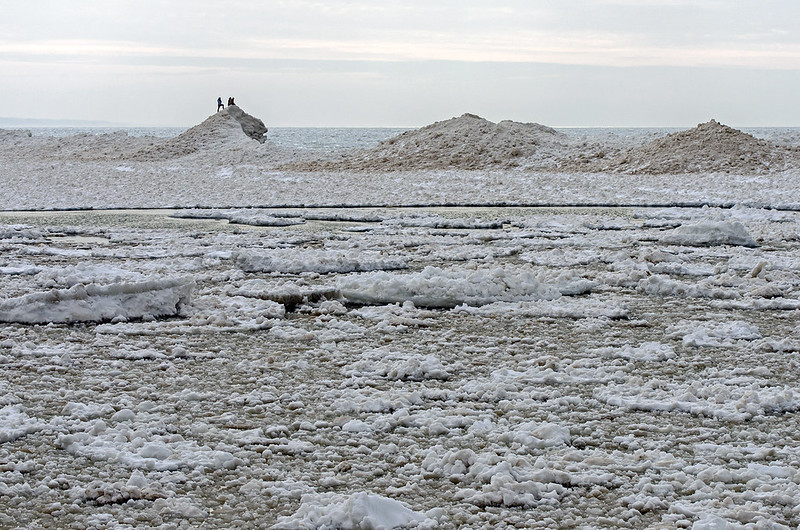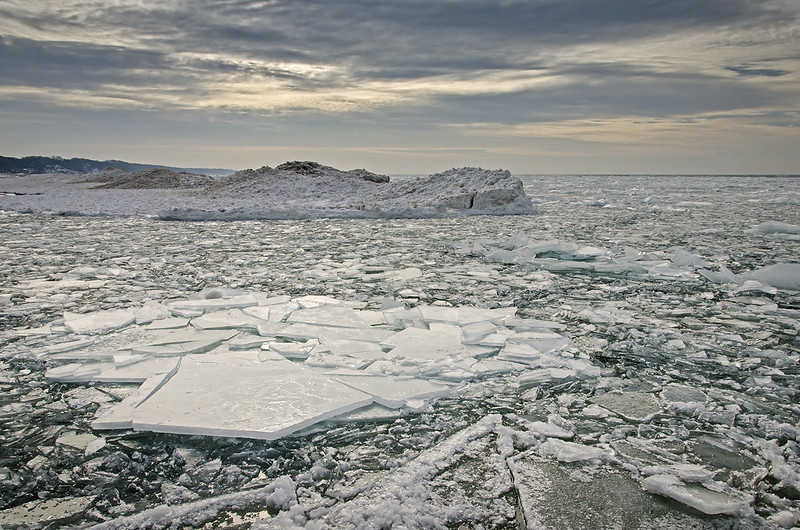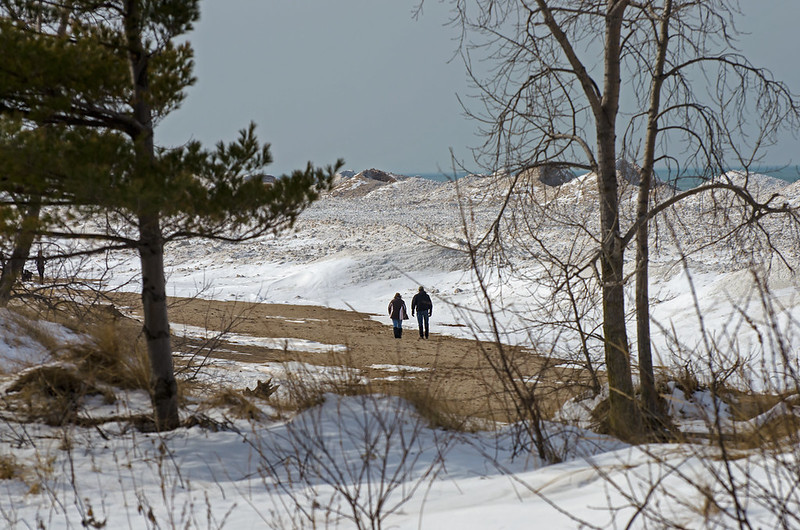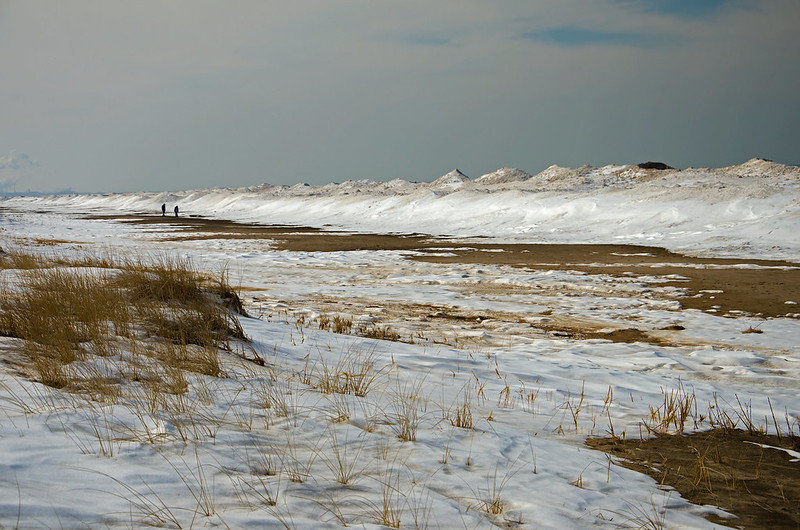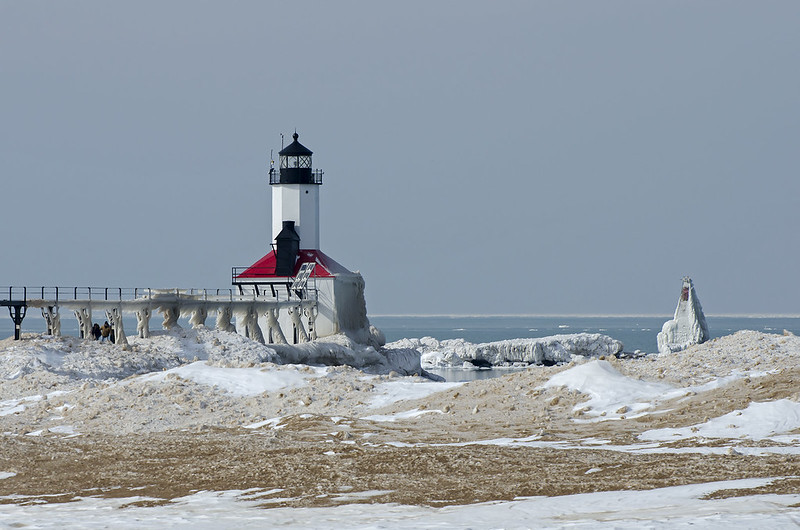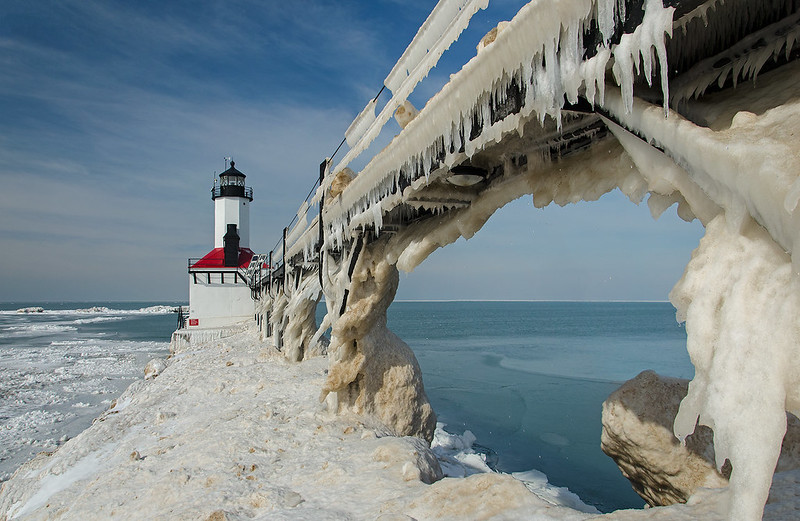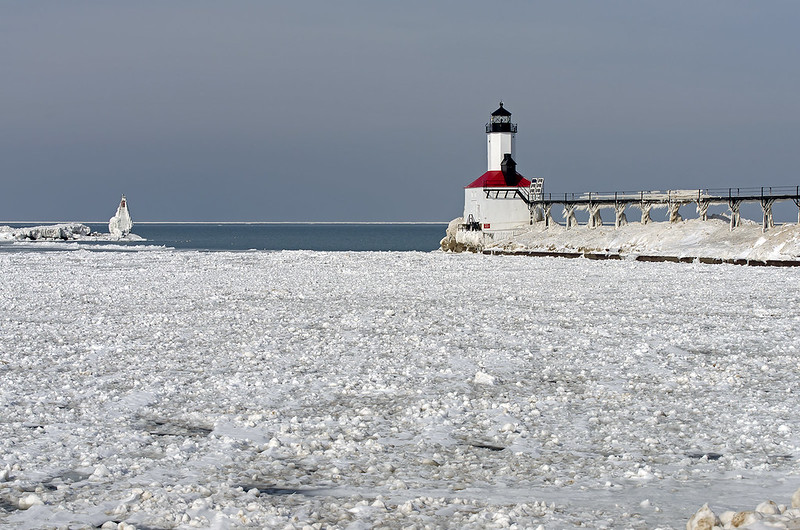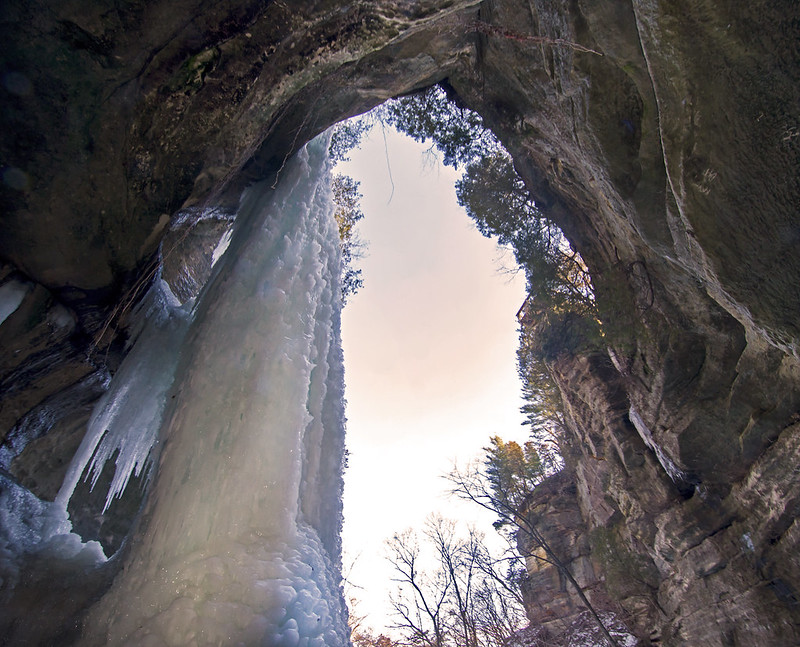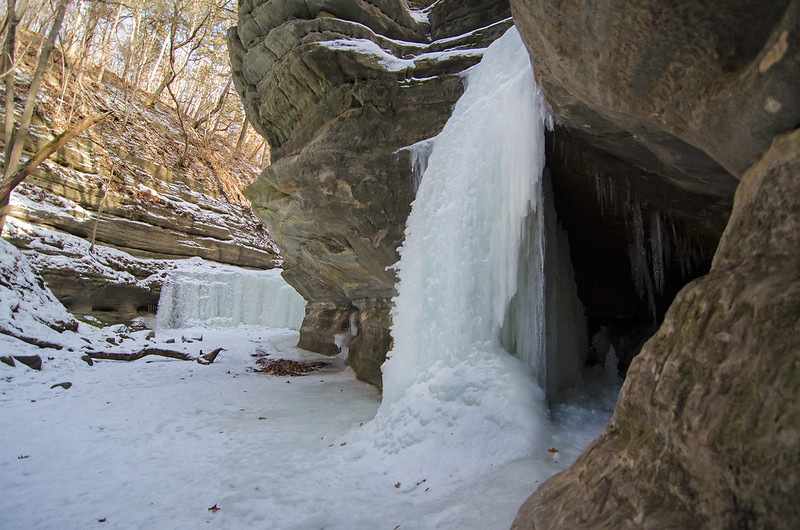
Almost every winter, the waterfalls of Matthiessen State Park freeze over. One pair of waterfalls that are in close proximity to each other, but not often visited (because one needs to cross a small creek), create ice caves on the sides of the canyon walls.
The canyon walls are undercut here, and as the water flows over, it drops several feet away from the interior rock wall allowing for space between the falling water and the back of the canyon wall. When the falling water freezes, it creates a solid wall of ice, with a few feet in between the ice and the rock wall. Most years, agile hikers can climb into this space, and explore the "ice cave" from within.
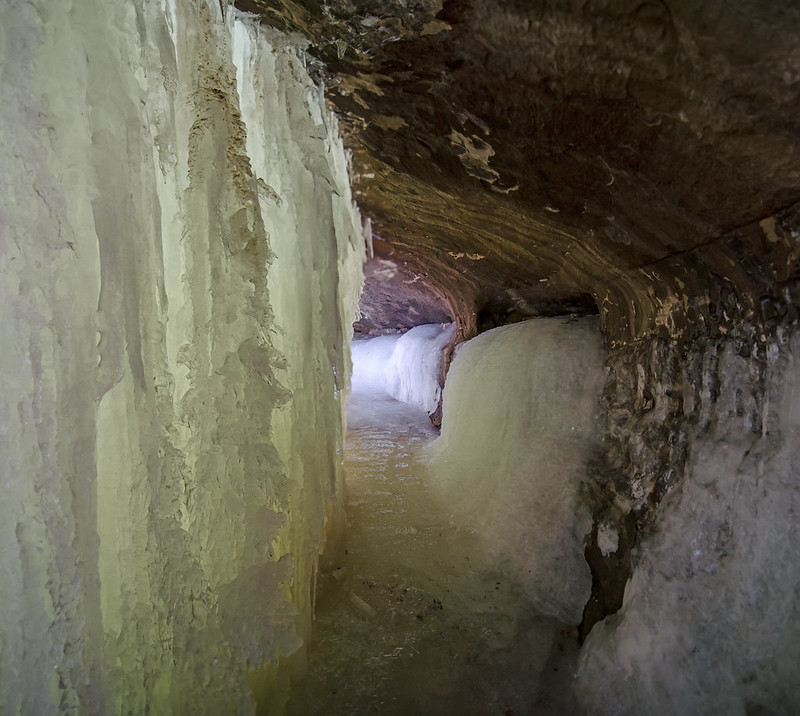
This winter, the canyon beyond Matthiessen's Cedar Point contained two frozen waterfalls, and one in particular created an ice cave that was long and accessible from both sides. The approximately 50 foot long cave had an interior height of about five feet, and width of four feet, making the walk inside relatively easy. In years past, the length of the cave was obstructed by ice, and one could only venture in a few feet before confronting the end of the cave.

Eerily lit by sunlight filtering through the ice wall, I found the light mesmerizing as I explored inside the cave. The ice was multicolored; minerals and clay carried by the water froze in place, and the canyon walls, sky, and trees were telegraphing through the ice. Water continued to fall between the frozen walls, creating a six to eight inch deep pond on the entire floor of the ice cave. As I walked through the cave to the far end, it was possible to exit on the other side of the canyon, where a good amount of water was falling from the creek above. Not wanting to get drenched on such a cold afternoon, I headed back the way I came, viewing the ice from a different perspective.

Most of Matthiessen's five or more waterfalls freeze each winter, but the two beyond Cedar Point are by far the most interesting for me to explore - inside and out.
